Tambov Oblast - Overview
Tambov Oblast is a federal subject of Russia located in the southern part of the East European plain, in the central part of the Oka-Don plain, part of the Central Federal District. Tambov is the capital city of the region.
According to the Federal State Statistics Service of Russia, the population of Tambov Oblast is about 946,700 (2025), the area - 34,462 sq. km.
History of Tambov Oblast
The oldest indigenous population of the Tambov region was the Mordva-Moksha, formed as a separate people from local ethnic groups in the 6th century AD. The Scythians and Sarmatians lived in the steppes. There are also traces of the Polovtsians.
In the 10th century, a trade route from Kiev to the Bulgar was laid through the territory of the present Tambov region. The north-western part was part of the Ryazan principality. Archaeologists found traces of ancient Russian weapons here: arrowheads and spearheads, battle axes.
In 1237, the territory of the Tambov region was captured by Batu, after which these lands became part of the Golden Horde. The region was partially depopulated and became part of the so-called Wild Field - a historical area of sparsely populated Black Sea and Azov steppes between the Dniester in the west, the Don and Khopyor in the east.
More historical facts…
To protect the southern boundaries of Russia from the raids of the Tatars and further development of the Chernozem (black soil) region, the Russian government built the fortress-towns of Kozlov (1635) and Tambov (1636). They reliably blocked the main ways of nomadic raids on Russian lands (primarily the Ryazan region) and opened the possibility for rapid colonization of the region.
During the reign of Peter I, this region turned into a Russian province. In the course of administrative reforms in 1708 and 1719, it became part of the Azov and then the Voronezh province. In 1779, Tambov vicegerency was formed. In 1796, it became Tambov guberniya (province) with an area of 66,500 square km with 12 counties.
During the Patriotic War of 1812, the Tambov Governorate was not in the zone of military operations, but about 12,000 local militiamen took part in the war. About 5,000 of captured French were settled here after it. In 1870, a railway passed through Tambov.
During the famine of 1891-1892, the Tambov Governorate was among the 17 regions that were severely affected. At the beginning of the 20th century, the population of the Tambov region exceeded 3 million people.
Almost unchanged, this region existed until 1928. On September 27, 1937, from the Voronezh and Kuibyshev regions, a separate Tambov Oblast was allocated.
During the Second World War, Tambov Oblast was a front-line territory and was not part of the zone of German occupation. After the collapse of the USSR, the population of Tambov region is steadily decreasing.
Beautiful nature of Tambov Oblast
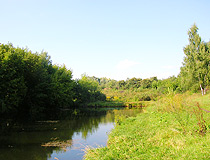
Nature of Tambov Oblast
Author: Victor Smagin
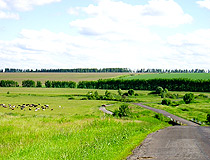
Tambov Oblast scenery
Author: Alexander Rezvantsev
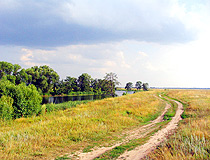
Field road in the Tambov region
Author: Fomenko Aleksey
Tambov Oblast - Features
The coat of arms and the flag of the Tambov region are based on the coat of arms of the city of Tambov, adopted in 1781. On the coat of arms you can see a beehive and three bees symbolizing diligence and the production of honey - one of the main occupations of local people since ancient times.
Tambov Oblast is located in the forest-steppe zone. The main natural resources are phosphorites, building materials, mineral paints, peat. About 1,400 rivers and streams flow through the territory of the region. The main rivers are the Tsna (the Volga basin), Vorona, Bityug, Voronezh, and Savala (the Don basin). Water resources also include about 900 ponds and reservoirs. Forests occupy about 10% of the territory.
The climate is moderately continental. The average temperature in January is minus 8-9 degrees Celsius, in July - plus 19-20 degrees Celsius. The largest cities and towns are Tambov (287,400), Michurinsk (88,700), Rasskazovo (41,800), Morshansk (36,900), Kotovsk (28,300), Uvarovo (22,500).
Mechanical engineering, chemical, light, food industries are the basis of the region’s economy. The main products of local agriculture are grain, sugar beets, sunflower, potatoes.
The South-Eastern Railway, connecting the center with the southern regions, runs in the western part of the region, through the town of Michurinsk. The main highway M6 “Caspian”, passing near Michurinsk and Tambov, connects the center with the Volgograd and Astrakhan regions, the Republic of Kalmykia.
Tourism in Tambov Oblast
Tambov Oblast is the center of European Russia, a place where rich history and culture intertwine, springs and shady forests alternate with boundless steppes. On the territory of the region there are more than 1,300 objects of cultural heritage, including 120 Orthodox churches, 9 monasteries, about 30 aristocratic estates.
In 2002, Tambov, Michurinsk, Morshansk, and Kirsanov were included in the list of historic towns of Russia. The region offers opportunities for cycling, car tourism, horse tourism, hunting, fishing, geocaching. Once a year, the Pokrovskaya Fair is held in Tambov (in mid-October).
The main natural attractions of Tambov Oblast:
- Voroninsky Reserve located in the valley of the Vorona River, in the forest-steppe zone, in Kirsanovsky and Inzhavinsky districts. It was created to preserve the forest-steppe ecosystems of Central Russia,
- Barskaya Mountain in Inzhavinsky district,
- Bailovsky Park in Pichaevsky district,
- Thuya Grove in Petrovsky district,
- Ekaterininsky Dendrological Park in Nikiforovsky district,
- Oak grove “Bolshaya Matyra” in Tambov district,
- Tourist complex “Russian Village” in the village of Karandeyevka,
- Recreation center “Yantsev’s Manor”,
- Fishery and sports base “Chelnavka”,
- Deer farm in the village of Sosnovka,
- Ostrich farm in Sosnovsky district.
The historical places of interest in Tambov Oblast:
- Regional Museum of Local Lore, House-Museum of G.V. Chicherin, museum complex “The Manor of the Aseevs”, Museum of the Wolf in Tambov,
- Museum-Estate of the artist A.M. Gerasimov, House-Museum of I.V. Michurin in Michurinsk,
- Museum-Estate of S.V. Rachmaninov in Ivanovka,
- Museum of E.A.Baratynsky in the village of Sofyinka,
- Museum-Estate of the Academician V.I. Vernadsky in the village of Vernadovka in Pichaevsky district,
- Historical and Art Museum in Morshansk,
- Historical and Educational Museum Complex of Kotovsk,
- Annunciation Church with a ceramic iconostasis in the village of Novotomnikovo in Morshansky district,
- Church of the Archangel Michael with a porcelain iconostasis in Mordovo.


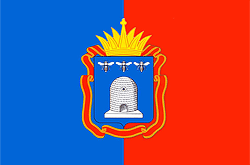
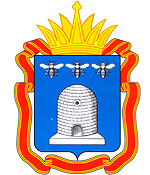
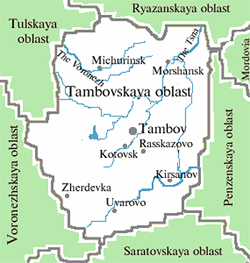



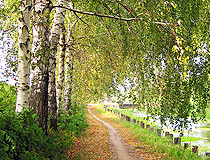
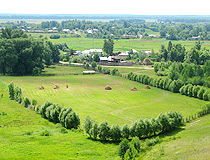
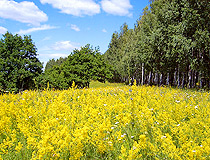
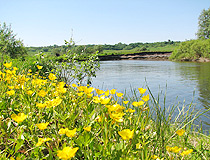
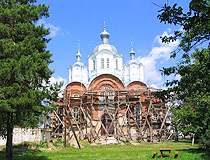
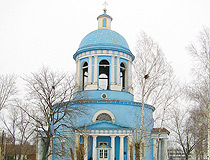
The comments of our visitors